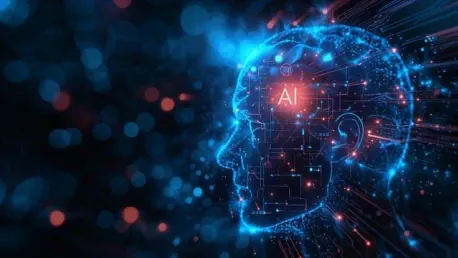The rapid advancements in generative AI technology have created a paradoxical landscape in the realm of cybersecurity. While these innovations offer powerful tools for enhancing security measures, they simultaneously equip cybercriminals with sophisticated means to launch more effective attacks. This duality underscores the urgent need for a collective approach to cyber resilience, as highlighted by the World Economic Forum (WEF) in their latest cybersecurity outlook. This complex relationship between generative AI and cybersecurity prompts a reevaluation of how organizations handle their defenses against increasingly sophisticated threats.
The Intersection of AI and Cybersecurity Risks
Generative AI has transformed the cybersecurity domain into a battleground where advanced tools can both detect and perpetuate threats. On one hand, AI empowers cyber defenders by providing them with sophisticated methods to anticipate and neutralize potential breaches. Conversely, the same technology gives cybercriminals the ability to design attacks that are more intricate and harder to detect. This dynamic has prompted organizations to heighten their focus on cyber resilience. The WEF emphasizes that cybersecurity is a shared responsibility that transcends organizational boundaries, calling for both technological solutions and a fundamental shift in how cybersecurity challenges are managed within companies.
The evolving threat landscape demands a reevaluation of cybersecurity measures to effectively manage AI-powered threats. Cybercriminals leveraging generative AI can often stay a step ahead, creating an alarming race between attackers and defenders. This reality has led to an increased collective need for robust security strategies. Organizations are now faced with the immense challenge of not only adopting advanced technological defenses but also fostering a security-centric organizational culture. This necessitates an integrated approach where technology and human expertise coalesce to create an impenetrable defense against cyber threats.
Microsoft’s Legal Actions Against AI-Enabled Cybercrimes
In a significant move to combat AI-enabled cybercrimes, Microsoft has taken decisive legal action against cybercriminals who develop tools to circumvent AI safety measures. Specifically, Microsoft’s Digital Crimes Unit has initiated a legal case in the United States court system aimed at halting the exploitation of generative AI for malicious purposes. By targeting a foreign-based threat group that has been creating sophisticated software to exploit customer credentials and compromise AI services, Microsoft aims to illustrate the far-reaching implications of AI misuse. The criminals reselling access to other malicious actors reveal the complex web of AI exploitation.
Microsoft’s proactive stance symbolizes a commitment to deterring the weaponization of AI technologies. Their efforts extend beyond legal action; they include revoking access and implementing robust countermeasures to prevent future exploits. By doing so, Microsoft is not only protecting its customer base but also sending a strong message that the abuse of AI technology will not be tolerated. This serves as a rallying point for other tech companies to adopt similar measures, creating a united front against the malicious uses of AI in cyberspace.
The Gap Between AI Recognition and Security Implementation
The World Economic Forum’s cybersecurity outlook reveals a troubling paradox: while a significant number of organizations recognize the profound impact that AI will have on cybersecurity, fewer than half have established adequate processes to secure AI tools before their deployment. This evident gap between recognizing the risks and implementing necessary safeguards highlights a critical vulnerability in the current cybersecurity framework. Organizations must bridge this gap to ensure that AI technologies are not exploited by cybercriminals, jeopardizing the very fabric of their security.
To address this vulnerability, organizations need to prioritize securing their AI tools, which involves not only cutting-edge technological defenses but also a comprehensive approach to cybersecurity that includes leadership commitment and a strong organizational culture conducive to security best practices. The WEF underscores the importance of closing this gap by urging organizations to adopt a proactive stance on AI security. By doing so, they can build a strong defense mechanism that can withstand both current and emerging threats, enhancing the overall resilience of their cyber infrastructure.
The Persistent Threat of Ransomware
Ransomware remains a top concern for many organizations, as highlighted by surveys conducted by the World Economic Forum. The pervasive threat of ransomware is further complicated by the rise of Ransomware-as-a-Service (RaaS), which makes it easier for cybercriminals to launch sophisticated attacks. This commoditization of ransomware has made such attacks more accessible, increasing the threat level and presenting a significant challenge for organizations worldwide. The persistent nature of ransomware necessitates robust and proactive measures to defend against these attacks.
Organizations must remain vigilant and consistently update their cybersecurity measures to stay ahead of evolving ransomware tactics. This involves not only deploying advanced detection and mitigation technologies but also fostering a security-aware culture among employees. Efficient incident response strategies and regular training programs can empower organizations to effectively counter ransomware threats. As ransomware continues to pose substantial risks to business operations and sensitive information, a comprehensive approach to cybersecurity is crucial in mitigating the impact of such attacks.
Regulatory Challenges in Cybersecurity
Navigating the complex and fragmented regulatory landscape for cybersecurity presents significant challenges for organizations striving to maintain compliance. Over 76% of chief information security officers (CISOs) report that regulatory disharmony complicates their efforts to ensure comprehensive cybersecurity. While regulations are essential for improving baseline security and building trust among stakeholders, the proliferation and fragmentation of regulations across different jurisdictions create a challenging environment for organizations to manage.
To effectively navigate this regulatory landscape, organizations must adopt a coordinated approach and cultivate a deep understanding of the various requirements they need to meet. This demands a concerted effort from leadership teams to ensure compliance while simultaneously enhancing overall cybersecurity measures. By addressing regulatory fragmentation and fostering a unified approach to compliance, organizations can better protect themselves against evolving cyber threats.
Geopolitical Tensions and Supply Chain Vulnerabilities
The uncertainty in the cyber environment is further compounded by geopolitical tensions, adding to the complexity of the risk landscape. The increased integration and interdependence on complex supply chains introduce new vulnerabilities that cybercriminals can exploit. As organizations rapidly adopt emerging technologies, they must also contend with the heightened risks associated with these advancements. This multifaceted cybersecurity challenge necessitates comprehensive strategies that address technological, geopolitical, and supply chain-related threats.
Organizations must be proactive in mitigating the risks posed by geopolitical tensions and supply chain vulnerabilities. This involves conducting thorough risk assessments, implementing stringent security measures, and fostering collaboration among stakeholders to ensure a secure and resilient cyber environment. By adopting a holistic approach to cybersecurity that encompasses both technological and geopolitical factors, organizations can better navigate the complexities of the current threat landscape.
The Widening Cyber Skills Gap
The rapid advancements in generative artificial intelligence (AI) technology have created a paradoxical landscape in cybersecurity. These innovations provide powerful tools for enhancing security measures but, at the same time, equip cybercriminals with sophisticated means to launch more effective attacks. This duality underscores the urgent necessity for a collective approach to cyber resilience, a crucial point highlighted by the World Economic Forum (WEF) in their latest cybersecurity outlook. The intricate relationship between generative AI and cybersecurity prompts organizations to reassess how they defend against increasingly sophisticated threats. AI can automate threat detection and response, making defenses more robust and efficient. However, it also allows cybercriminals to generate believable phishing schemes, deepfakes, and other forms of attacks that are harder to detect and defend against. As both defenders and attackers benefit from AI, there is mounting pressure on organizations to stay ahead in this high-stakes technological race, emphasizing the critical need for enhanced cyber resilience and collaboration.









